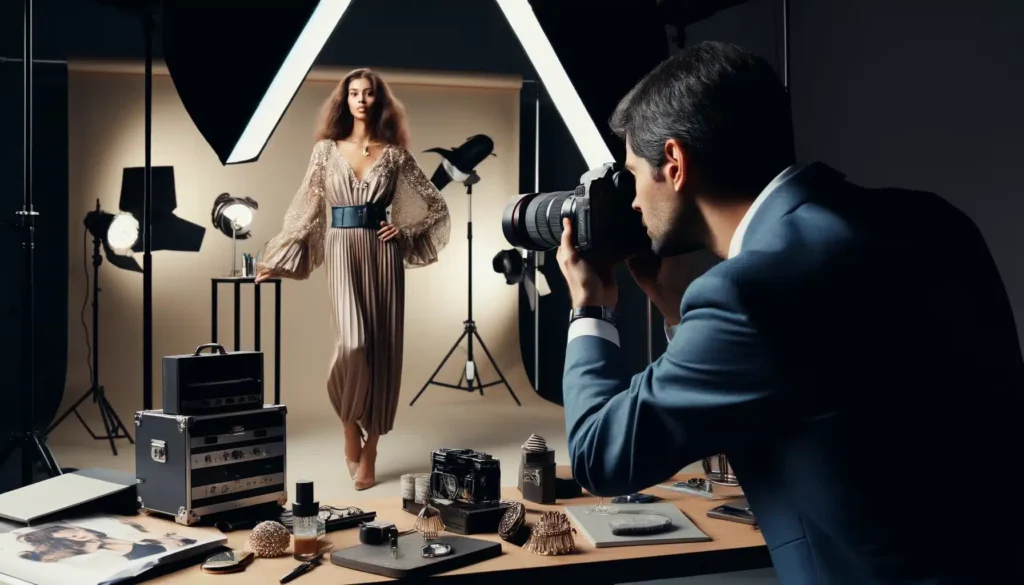Photography Tips for Beginners
 While photography is a highly fulfilling and artistic activity, it may be intimidating when you are just beginning your journey. Everyone can learn the ropes of photography with a little bit of know-how and some practice. In this beginner guide of photography, we take you through all five essential steps to get into the field and build a camera-like foundation.
While photography is a highly fulfilling and artistic activity, it may be intimidating when you are just beginning your journey. Everyone can learn the ropes of photography with a little bit of know-how and some practice. In this beginner guide of photography, we take you through all five essential steps to get into the field and build a camera-like foundation.
The Fundamentals of Photography
 But before getting into the practicalities, you have to learn photography essentials. The fundamental principle of photography is all about light and how to capture it. The settings on your camera determine the amount light it allows to hit a sensor, which creates an image. A Beginner’s Guide to Photography might say that most Photographies are exposed with a f-stop and focal length, right from the camera lens.
But before getting into the practicalities, you have to learn photography essentials. The fundamental principle of photography is all about light and how to capture it. The settings on your camera determine the amount light it allows to hit a sensor, which creates an image. A Beginner’s Guide to Photography might say that most Photographies are exposed with a f-stop and focal length, right from the camera lens.
All three work in conjunction to construct balance. Exposure determines the dark and light of your photo, composition is how you put everything together in frame, focus ensures that whatever subject u have should be sharp.
The best camera for beginners
 You do not need the best camera in the world when you are just beginning. Instead, you should just find a camera that fits your needs and budget. In A Beginner’s Guide to Photography, we do recommend starting with a DSLR some good optics or cambelt lenses, but also mirror less models and even high ending smart phone cameras.
You do not need the best camera in the world when you are just beginning. Instead, you should just find a camera that fits your needs and budget. In A Beginner’s Guide to Photography, we do recommend starting with a DSLR some good optics or cambelt lenses, but also mirror less models and even high ending smart phone cameras.
A DSLR or mirrorless camera gives you a great opportunity to learn the ins and outs of things like aperture, shutter speed, and ISO. These cameras will provide you with the most flexibility as your skills develop. Smartphone camera is another option for beginners, which most of us have and still can take excellent photos.
Learn the Exposure Triangle
 In A Beginner’s Guide to Photography, I covered one of the most basic ideas — The Exposure Triangle (Aperture, Shutter Speed and ISO). The quantity of light that goes into the camera and directly impact on image are controlled by these three factors.
In A Beginner’s Guide to Photography, I covered one of the most basic ideas — The Exposure Triangle (Aperture, Shutter Speed and ISO). The quantity of light that goes into the camera and directly impact on image are controlled by these three factors.
Aperture controls depth of field — how much the image is in focus.
The Shutter speed (how long the sensor is exposed to light) and how that effects motion in your shot.
ISO: stands for film speed -adjusts your camera’s sensitivity to light, higher the number, lighter the image.
Hints about where to set this top dial, in these three areas would be as follows: Balancing the exposure between ISO, aperture and shutter speed will allow you greater control on exactly what your photos look like.
How to Composition for Beautiful Photographs
 Capturing those good photos is not just about the technical settings but also where and how you compose your shots. All across A Beginner’s Guide to Photography, we talk about composition. The Rule of Thirds is probably one of the most common composition tools; it divides your frame into nine equal sections and encourages you to place subjects along those thirds to achieve an interesting yet balanced image.
Capturing those good photos is not just about the technical settings but also where and how you compose your shots. All across A Beginner’s Guide to Photography, we talk about composition. The Rule of Thirds is probably one of the most common composition tools; it divides your frame into nine equal sections and encourages you to place subjects along those thirds to achieve an interesting yet balanced image.
There are plenty of others — like using leading lines to direct the viewer where you want them to look, symmetry for a different sense of harmony and stability in an image, or framing if you need both isolate what emphasizes your subject. By using this composition techniques to enhance the differences of a photo it can be OK but no one or more powerful and interesting.
Choosing the Right Lenses
 The Beginner’s Guide to Photography – Lenses, are really make the differences with your view of perspective in photos. The prime and zoom lenses are of main two types but again there is so n number in every category.
The Beginner’s Guide to Photography – Lenses, are really make the differences with your view of perspective in photos. The prime and zoom lenses are of main two types but again there is so n number in every category.
Because prime lenses are always sharp, they give excellent performance when it comes to low-light photography.
Zoom lenses have a range of focal lengths, which makes them versatile for on the go or when you cannot move close to your subject closely.
This begins with determining the type of photographs you are interested in — portraits, landscapes or action shots.
Photography Styles to Explore
 Picking a style, the last thing you will have to do is choosing Thing about photography there are many different styles. A Beginner’s Guide to Photography by Photoworks.io tells you to experiment with different types of photography so that you can determine what interests are in the field. Here are some popular styles:
Picking a style, the last thing you will have to do is choosing Thing about photography there are many different styles. A Beginner’s Guide to Photography by Photoworks.io tells you to experiment with different types of photography so that you can determine what interests are in the field. Here are some popular styles:
PORTRAIT PHOTOGRAPHY: BRING OUT THE EMOTION IN YOUR SUBJECT
Landscape Photography – focusing in on either natural or urban environments
Street Photography (Documenting candid moments in public spaces)
Macro — Shooting really, really close to things like bugs or blooms.
Every style has creativity in its own way, so do not be hesitant to try them out!
Post Processing Tips for Beginner Photographers
 Edit Your Photos
Edit Your Photos
The photo is simply the beginning phase. Finally, we will go over editing essentials in A Beginner’s Guide to Photography. As such, post-processing also allows you to enhance your images (contrast or clarity), correct mistakes (overexposed image) and inject a bit of ourselves into the photos. Then you can use software such as Adobe Lightroom, Photoshop or freebies like GIMP and Snapseed.
Begin by adjusting the Exposure, Contrast and Color Balance. From there, tune the finer details like sharpening, cropping and removing distractions. When you are still starting, remember that editing is a tool and make sure to have it subtle as natural as possible.
Chasing Your Photography Style
Eventually, you do not even follow a Photography style and develop your own Style of photography as it comes out. For example, the book A Beginner’s Guide to Photography tells you head on that %90 of shots are just inspiration for other photographers so take a look at what others do and follow them but also fool around with ideas when it seems interesting.
Whether that is in how you compose, light or edit — your style will embody this vision and creativity making what you do unique from all the rest.
Photography Mistakes You Can Avoid as a Newbie in Photography
 It might not be that easy to avoid them all, but if you can skip some of the most common mistakes in photography it will make your path a little easier. We point out some common mistakes in A Beginner’s Guide to Photography that all beginners make.
It might not be that easy to avoid them all, but if you can skip some of the most common mistakes in photography it will make your path a little easier. We point out some common mistakes in A Beginner’s Guide to Photography that all beginners make.
Out of focus images — this results from having slow shutter speeds or the camera lens is not focusing properly.
Improper handling of the exposure triangle: overexposure/underexposure
Disregarding composition: Taking a shot without thinking about how it is laid out.
The more you practice and make mistakes the better, so do not be disheartened – every photographer was a beginner once!



